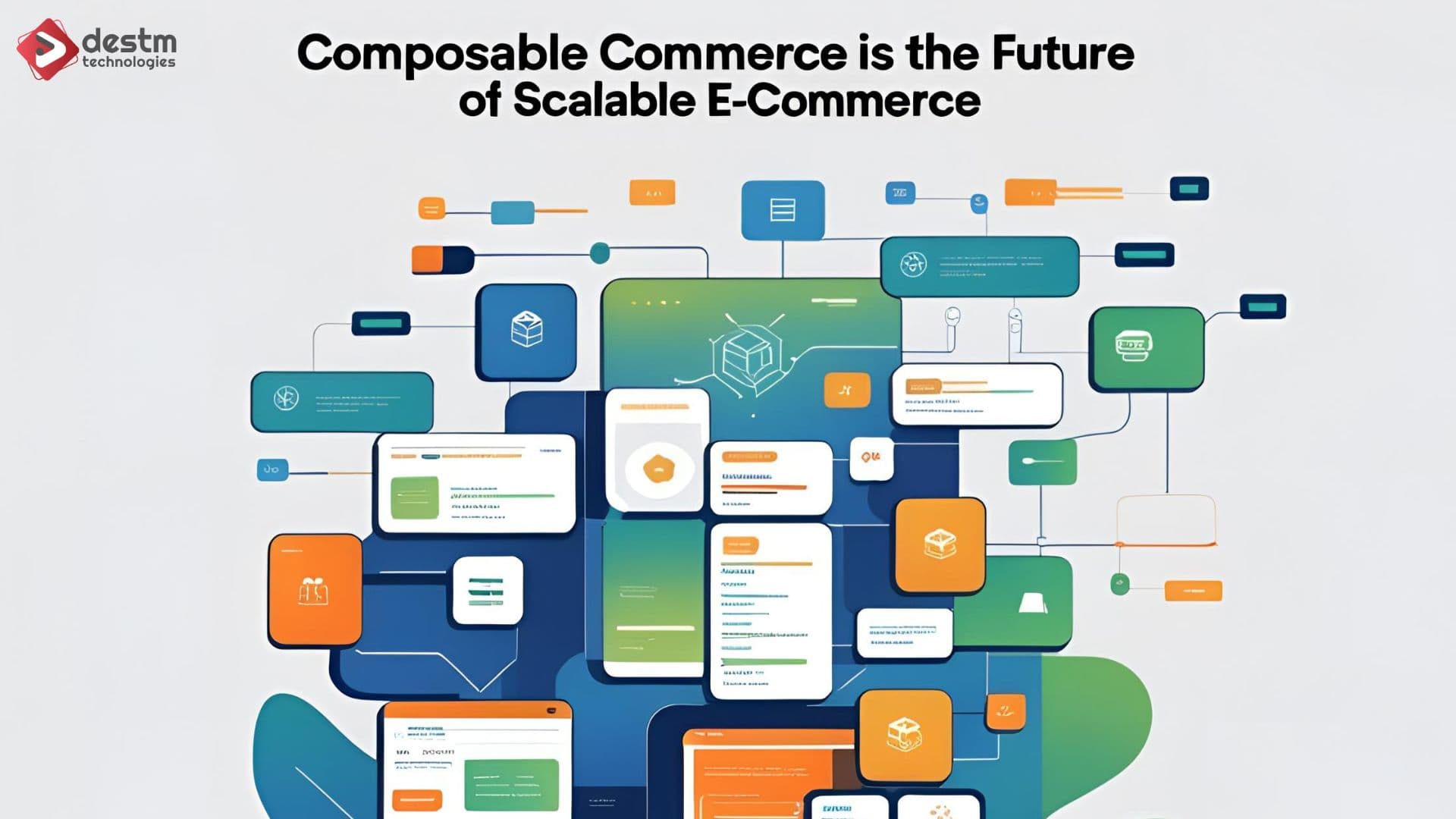



E-commerce is undergoing a transformative shift. As digital ecosystems become more complex and customer expectations more demanding, businesses are rapidly discovering the limitations of traditional monolithic commerce platforms. These legacy systems, while once sufficient, now pose serious challenges when it comes to agility, customization, and scalability.
Enter composable commerce—a modern, modular approach that’s redefining how e-commerce experiences are built and delivered. By allowing organizations to assemble their digital commerce stack from a suite of best-in-class, independently deployable components, composable commerce unlocks the flexibility needed to innovate faster, adapt to change, and deliver seamless experiences across channels.
This blog explores why composable commerce is not just a trend, but a strategic necessity for future-ready e-commerce. From its MACH-based architecture to real-world examples and implementation strategies, we’ll break down how this approach empowers businesses to scale with confidence and create meaningful digital journeys.
At its core, composable commerce is a modern, service-oriented architecture that enables organizations to assemble their technology stack from independently deployable components. This approach replaces monolithic systems with a flexible framework where every element—such as content management, product search, or checkout—is developed, managed, and scaled independently. The foundation of composable commerce lies in the MACH principles:
Microservices – Independent services, each responsible for a specific business function.
API-first – Ensures seamless integration and communication between components.
Cloud-native – Designed for elasticity, scalability, and high availability.
Headless – Decouples the front-end and back-end, enabling omnichannel experience delivery.
This architecture allows organizations to move from a "one-size-fits-all" platform to a flexible ecosystem of specialized services.
1. Accelerated Innovation
Composable architecture allows development teams to implement and test new features independently. This modularity significantly reduces deployment cycles and accelerates time-to-market.
2. Horizontal and Vertical Scalability
Each component of the stack can scale based on its usage patterns. For example, the checkout service can scale independently during high-traffic sales events, improving overall system efficiency.
3. Vendor Independence and Flexibility
Organizations are no longer locked into a single provider. Components can be replaced or upgraded without requiring a complete platform overhaul, offering unprecedented agility.
4. Enhanced Customer Experiences
Headless front-end frameworks enable tailored, high-performance experiences across devices and touchpoints—improving engagement, conversion rates, and customer satisfaction.
5. Long-Term Cost Efficiency
Though initial investments in composable setups may be higher, businesses benefit from reduced technical debt, fewer bottlenecks, and more targeted resource allocation over time.
Several enterprise brands have successfully adopted composable commerce to meet their complex, evolving needs:
Burberry transitioned to a MACH-based architecture to deliver personalized experiences across global markets, reducing their deployment cycles significantly.
Netlify, a leader in modern web infrastructure, uses composable principles to power its ecosystem of developer tools and digital experiences.
Breitling embraced composable commerce to align its in-store and online experiences, improving engagement and unifying customer touchpoints.
These success stories highlight the tangible benefits of composable agility in action—from performance improvements to faster innovation cycles.
While composable commerce offers strategic advantages, it also introduces architectural and operational complexities that must be carefully managed:
Architectural Design Complexity: Composable environments require thoughtful planning to ensure interoperability and long-term maintainability.
Integration Effort: Connecting APIs and managing data flow between components can demand advanced development capabilities.
Operational Maturity: A mature DevOps culture, including CI/CD pipelines, observability tools, and automation practices, is essential for success.
Vendor Coordination: Managing relationships and service-level agreements (SLAs) across multiple providers necessitates strong vendor governance processes.
Organizations should approach the transition methodically, balancing short-term feasibility with long-term strategy.
Assess Your Current Architecture Conduct a thorough audit to identify bottlenecks, vendor limitations, and systems that could benefit from modularization.
Identify High-Impact Opportunities Start with areas that directly influence customer experience or operations, such as content delivery, checkout processes, or personalization tools.
Select MACH-Certified Vendors Choose solution providers aligned with MACH standards to ensure future-proof integrations and support.
Adopt a Phased Implementation Approach Avoid a full-scale replacement. Instead, gradually migrate components to composable alternatives to reduce risk and maintain business continuity.
Composable commerce is more than a technology trend—it’s a fundamental shift in how modern e-commerce platforms are designed, deployed, and scaled. By embracing modular, API-driven, cloud-native, and headless solutions, businesses can future-proof their operations, unlock faster innovation, and deliver tailored digital experiences at scale.
While the transition to a composable architecture requires strategic planning and operational maturity, the long-term benefits—flexibility, resilience, and competitive differentiation—make it a compelling investment for growth-oriented brands.
At Destm Technologies, we help businesses break free from rigid systems and unlock the full potential of composable commerce. Whether you're looking to modernize your current stack or build a MACH-aligned ecosystem from the ground up, our experts are ready to guide you through every step of the journey.
The future of e-commerce is composable—are you ready to build it?
Ready To Transform Your E-commerce Business?
Let's discuss your project and explore how we can help you achieve your goals.